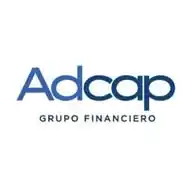
Adcap House View - Finanzas y Mercados
February 18, 2025 at 10:08 PM
*ADCAP SECURITIES FEBRUARY 18 CLOSING COMMENTS:*
• Today wasn’t as bad as expected. Many ADRs ended positive, while others closed slightly negative after yesterday’s sharp drop in the local peso market with very low liquidity. We expected ADRs to continue that trend, but that didn’t happen. The BCS confirmed the ARS 20 jump from ARS 1,197 on Friday to ARS 1215 where it closed today. The Central Bank bought $171 million in the official market.
• In the bond market, the lowest prices were seen early in the morning, with no bids coming in. The ARGENT 2030 traded at $73.65, the 2035 at $64.65, and by the end of the day, the ARGENT 2035 recovered half a point while the 2030 gained a bit more, last traded around $74.35. On Friday, the last trade was at $74.85, so overall, we’re down 60 cents. Not a huge deal. Volume was low, not many questions, and there’s a general consensus that this was a misstep, though its real impact will be seen over the medium term.
• For Provincials, BUENOS closed at $69.80 on Friday, traded down to $69.00 and ended more offered at $68.50, nearly doubling the impact on Sovereign Bonds, after being outperforming sin early January. The second-tier names still have demand but aren’t really trading.
• Corporates opened with lower bids but ended mostly unchanged. The last YPF 2034 trade on Friday was at $102.00, and today it closed between $101.70 and $102.10. Some demand for the 2031s, some supply in the 2033s. Telecom 2031, which had seen two-way flow on Friday around $105-$105.20, closed around those levels again. TRAGAS saw stronger bids, closing at $106.15 mid-market, outperforming the corporate curve. Worth noting that corporates held up well despite the massive selloff in Treasuries. The 30-year Treasury dropped more than a point, and the 10-year, fell over half a point. Still, most corporates remained unchanged, separate from the Argentina noise.
• As for stocks, despite lingering concerns from the crypto scandal, investors still seem to favor Argentine equities. The session opened with high volatility, but after the first hour, many Argentine ADRs moved into positive territory. The overall performance so far is significantly better than what many analysts had anticipated. The Merval surged 6.1%, closing at $1,977. The biggest gainers of the day were Grupo Financiero Galicia (GGAL) +9.32%, Transportadora de Gas del Sur (TGSU2) +9.23%, Telecom Argentina (TECO2) +9.14%, and Loma Negra (LOMA) +8.77%, reflecting strong buying interest across various sectors. Adecoagro (AGRO) surged more than 12% after news broke that Tether Investments made an unsolicited offer to acquire a 51% controlling stake in Adecoagro at $12.41 per share, representing a 29% premium over its current price. The offer values the company at $1.975 billion, with Tether already holding 19.4% of Adecoagro’s shares. The proposal was made through a tender offer, following a Schedule 13D disclosure on November 14, 2024. Meanwhile, we observed sellers in Banks and Oil & Gas, likely driven by speculative fund trading in Argentine assets
• Peso bonds had a positive session, with fixed-rate instruments rising 0.3% on average, inflation-linked bonds up 0.1%, and dollar-linked bonds gaining 0.2%.
• Fixed-rate bonds erased yesterday’s losses, with notable strength at the long end of the curve. Dual bonds, particularly TAMAR and T15E7, stood out in performance and activity. The market appears to be gradually warming to longer-duration securities, given that the fully flat curve offers little incentive to shorten duration.
• Inflation-linked bonds had a generally positive session, though individual securities showed mixed movements. The TZXY5 dropped 0.4%, while the TZX25 gained 0.5%. Trading volume was solid, with flows concentrated in 2026 maturities.
• Dollar-linked bonds continued to attract interest, with activity levels elevated relative to typical volumes. Trading was focused on the TZV25, which edged up 0.2%. Notably, the peso-denominated synthetic of the TZV25 is yielding 4 percentage points more in nominal annual terms than its corresponding LECAP.